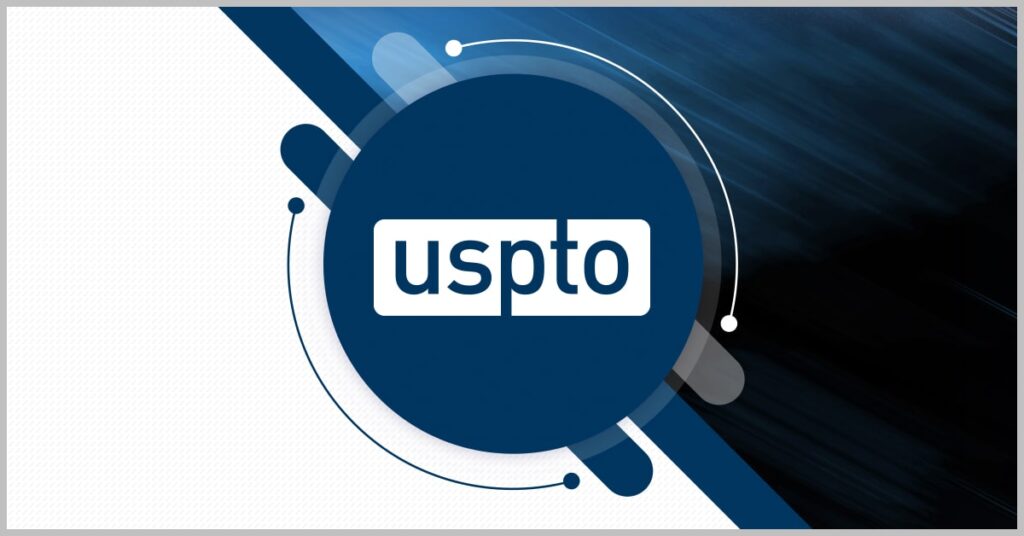The United States Patent and Trademark Office (USPTO) stands as the cornerstone of American innovation, protecting the intellectual property that drives technological advancement and economic growth. Whether you’re an inventor with a groundbreaking idea or a business owner looking to protect your brand, understanding how the USPTO operates is crucial for securing your intellectual property rights.
Understanding the USPTO’s Role in Intellectual Property Protection
The United States Patent and Trademark Office serves a fundamental purpose rooted in the Constitution itself. Article 1, Section 8 empowers Congress to “promote the Progress of Science and useful Arts, by securing for limited Times to Authors and Inventors the exclusive Right to their respective Writings and Discoveries.”
This constitutional mandate translates into the USPTO’s mission to provide efficient and sustainable solutions for intellectual property protection. The agency employs over 14,000 professionals, including attorneys, scientists, and engineers, all working to maintain the integrity of America’s patent and trademark systems.
The USPTO’s work extends far beyond processing paperwork. By granting exclusive rights to inventors and businesses, the office creates incentives for innovation and investment. This protection encourages companies to invest in research and development, knowing their discoveries will be safeguarded from unauthorized use.
Why Intellectual Property Protection Matters

Intellectual property protection serves multiple critical functions in the modern economy:
Economic Incentives: When inventors know they can protect their innovations, they’re more likely to invest time and resources in developing new technologies.
Market Competition: Patent and trademark protections create healthy competition by preventing unauthorized copying while encouraging others to develop alternative solutions.
Consumer Protection: Trademark registration helps consumers identify authentic products and services, protecting them from counterfeits and inferior imitations.
Innovation Disclosure: The patent system requires inventors to fully disclose their innovations, contributing to the global knowledge base and spurring further innovation.
Patent Applications: Your Gateway to Innovation Protection
The USPTO’s patent system handles multiple types of patent applications, with utility patents and design patents being the most common. Understanding the patent application process is essential for inventors seeking to protect their innovations.
Types of Patents Available
Utility Patents: These protect new and useful processes, machines, manufactures, or compositions of matter. Utility patents represent the majority of applications filed with the USPTO and provide protection for 20 years from the filing date.
Design Patents: These protect the ornamental design of functional items. Design patents focus on appearance rather than function and provide protection for 15 years from the grant date.
Plant Patents: Less common but equally important, plant patents protect new varieties of plants that can be reproduced asexually.
The Patent Examination Process
Patent applications undergo rigorous examination by qualified patent examiners. These professionals, trained in specific technical fields, evaluate applications for novelty, non-obviousness, and usefulness. The examination process typically involves:
Initial Review: Patent examiners conduct thorough searches of existing patents and published literature to determine if the invention is truly novel.
Office Actions: If issues are identified, examiners issue office actions detailing their concerns. Applicants can respond by amending their applications or arguing why the invention deserves patent protection.
Final Decisions: After reviewing responses, examiners make final decisions on patent applications, either granting patents or maintaining rejections.
Expedited Examination Options
The USPTO recognizes that some inventions need faster protection. The office offers several expedited examination procedures:
Prioritized Examination: This program provides faster final disposition of patent applications, typically within 12 months, for an additional fee.
Accelerated Examination: Available for certain applications, this option can significantly reduce examination time when specific criteria are met.
Patents Prosecution Highway: This international program allows applicants to fast-track examination based on positive examination results from other participating patent offices.
Trademark Registration: Protecting Your Brand Identity

The USPTO’s trademark office plays a crucial role in helping businesses protect their brand identities. Trademark registration provides exclusive rights to use specific marks in connection with particular goods or services.
Understanding Trademark Protection
Trademarks can include words, phrases, symbols, designs, or combinations thereof that distinguish goods or services in the marketplace. Unlike patents, which have limited terms, trademark protection can last indefinitely as long as the mark remains in use and proper maintenance filings are made.
The Trademark Application Process
Filing trademark applications with the USPTO involves several key steps:
Trademark Search: Before filing, applicants should conduct comprehensive searches to ensure their proposed marks don’t conflict with existing registrations.
Application Filing: Trademark applications can be submitted online through the USPTO’s electronic filing system, which streamlines the process and reduces fees.
Examination: Trademark examining attorneys review applications for compliance with legal requirements and potential conflicts with existing marks.
Publication: Approved applications are published in the Official Gazette, allowing third parties to oppose registration if they believe it would harm their interests.
Registration: If no opposition is filed or oppositions are resolved favorably, the USPTO issues trademark registrations.
International Trademark Protection
The USPTO facilitates international trademark protection through various programs:
Madrid Protocol: This treaty allows trademark owners to file a single application for protection in multiple countries, significantly simplifying international registration.
Paris Convention: This agreement provides priority rights for trademark applicants filing in multiple countries within specific timeframes.
International Cooperation and Global Protection
The USPTO’s influence extends well beyond American borders. The office actively cooperates with international organizations and foreign patent offices to strengthen global intellectual property protection.
Patent Cooperation Treaty (PCT)
The USPTO participates in the Patent Cooperation Treaty, which provides a framework for international patent applications. Through the PCT system, inventors can file a single international application that begins the patent process in multiple countries simultaneously.
Combating Counterfeiting and Illicit Trade
The USPTO works closely with other federal agencies and international organizations, including the OECD, to combat counterfeiting and illicit trade. This cooperation includes:
Online Marketplace Monitoring: The USPTO collaborates with major online platforms to identify and remove counterfeit products.
International Enforcement: The office works with foreign governments and international organizations to strengthen enforcement mechanisms worldwide.
Education and Outreach: The USPTO provides resources and training to help businesses and consumers recognize and report intellectual property violations.
Patent Law Fundamentals Every Applicant Should Know

Understanding basic patent law principles is essential for anyone seeking USPTO protection. Patent law has evolved significantly over the years, and staying current with these changes is crucial for successful applications.
Key Patent Law Concepts
Prior Art: This refers to all information publicly available before a patent application’s filing date. Patent examiners use prior art to determine if an invention is novel and non-obvious.
Claim Construction: Patent claims define the scope of protection. Understanding how to write and interpret claims is crucial for both applicants and patent owners.
Patent Prosecution: This term describes the process of obtaining a patent, including all communications between applicants and the USPTO.
Patent Validity: Once granted, patents are presumed valid but can be challenged in various proceedings, including Patent Trial and Appeal Board reviews.
Working with Patent Examiners: Best Practices
Patent examiners are highly skilled professionals who play a crucial role in maintaining patent quality. Understanding how to work effectively with examiners can significantly improve your chances of obtaining patent protection.
Communication Strategies
Clear and Concise Responses: When responding to office actions, provide clear, well-organized arguments that directly address the examiner’s concerns.
Technical Accuracy: Ensure all technical descriptions are accurate and complete. Patent examiners are experts in their fields and will notice inconsistencies.
Professional Conduct: Maintain professional, respectful communication throughout the prosecution process.
Interview Opportunities
The USPTO encourages applicant interviews with patent examiners. These conversations can help clarify complex issues and often lead to more efficient prosecution.
Leveraging USPTO Resources and Tools
The USPTO provides numerous resources to help inventors and businesses navigate the intellectual property system effectively.
Online Tools and Databases
Patent Database: The USPTO maintains comprehensive databases of all published patent applications and granted patents, freely accessible to the public.
Trademark Database: Similar searchable databases exist for trademarks, allowing users to research existing marks and monitor potential conflicts.
Filing Systems: Electronic filing systems streamline the application process and provide real-time status updates.
Educational Resources
Patent and Trademark Resource Centers: These centers, located throughout the United States, provide free access to USPTO databases and expert assistance.
Training Programs: The USPTO offers various training programs for inventors, attorneys, and businesses seeking to understand intellectual property protection.
Webinars and Workshops: Regular educational events help keep the intellectual property community informed about new developments and best practices.
Your Next Steps in IP Protection
Navigating the USPTO successfully requires preparation, patience, and often professional assistance. Start by thoroughly researching your invention or trademark to ensure it’s protectable and doesn’t conflict with existing rights.
Consider consulting with qualified patent attorneys or trademark lawyers who can guide you through the complex application process. While professional assistance involves additional costs, it often leads to stronger, more enforceable intellectual property rights.
Remember that intellectual property protection is an investment in your future. Whether you’re an individual inventor or a growing business, the exclusive rights provided by patents and trademarks can create significant competitive advantages and revenue opportunities.
The USPTO stands ready to help you protect your innovations and brands. By understanding the processes, requirements, and resources available, you can make informed decisions about your intellectual property strategy and take confident steps toward securing your place in America’s innovation economy.
Looking to Protect Your Intellectual Property?
Please contact Arlen Olsen at Schmeiser, Olsen & Watts LLP at aolsen@iplawusa.com.
About the Author

Mr. Olsen, a former adjunct professor of intellectual property law, has over 30 years of experience in all aspects of intellectual property law. Mr. Olsen is a founding Partner of Schmeiser, Olsen & Watts LLP and a former United States Patent Examiner. Mr. Olsen has prosecuted numerous patents that have been litigated and received damages of over 60 million dollars. Additional activities include teaching seminars, appearing as a guest lecturer on intellectual property matters for corporations and educational institutions, and evaluating and consulting with clients regarding the scope, enforcement, and protection of intellectual property rights.



